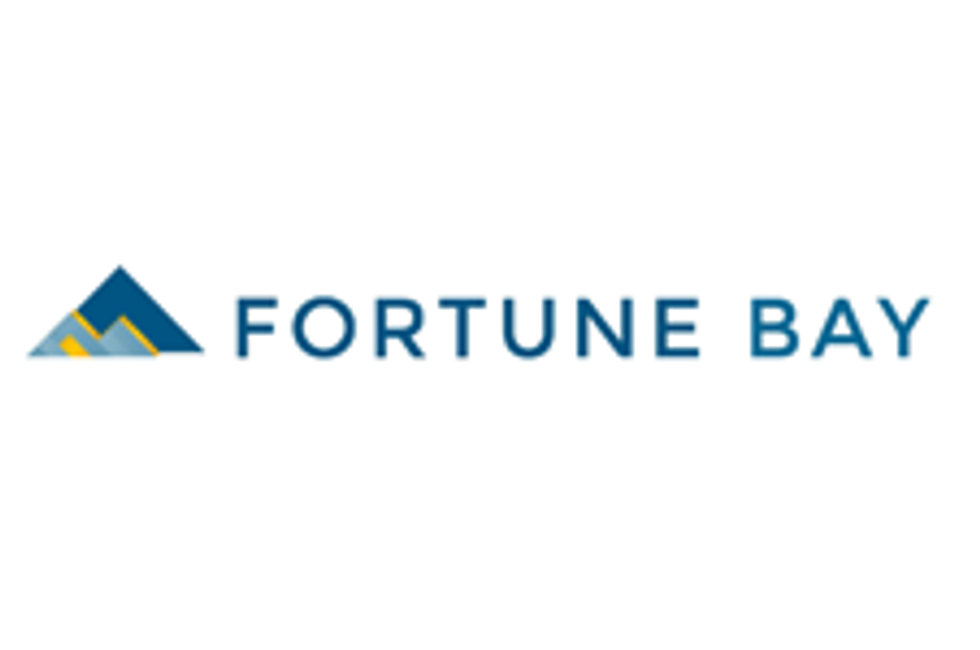David H. Smith: Prepare for Precious Metals to Lift Off
The end of the year is in sight, and many investors will soon be forced to take painful losses. David H. Smith, senior analyst at The Morgan Report, says that smart investors will take care to cull the weakest mining stocks from their portfolios and reinvest the proceeds in truly undervalued companies. In this interview with The Gold Report, Smith contends that once the market has worked through this process, a rejuvenated bull market in precious metals will eventually lead to a vertical rise in equities, with platinum group metals leading the way.
Source: Kevin Michael Grace of The Gold Report (12/2/13)
The end of the year is in sight, and many investors will soon be forced to take painful losses. David H. Smith, senior analyst at The Morgan Report, says that smart investors will take care to cull the weakest mining stocks from their portfolios and reinvest the proceeds in truly undervalued companies. In this interview with The Gold Report, Smith contends that once the market has worked through this process, a rejuvenated bull market in precious metals will eventually lead to a vertical rise in equities, with platinum group metals leading the way.
The Gold Report: With not many weeks left in 2013, gold remains under $1,300/ounce ($1,300/oz). Is this a bottom, or will it fall lower still?
David H. Smith: Gold is substantially below $1,300/oz, true, but, at this writing, it is still higher than its June low of $1,170/oz. Nothing is 100% certain, but David Morgan believes that the bottom is probably in. A stab into new lows is certainly possible, but I would be watching to see how a move like that is handled. A key reversal day, followed by higher prices, could be very bullish. What makes me tend to agree is looking at the mining stocks I follow. Many have begrudgingly and rather slowly declined, in relationship to down-days in the gold price.
It seems that gold will end 2013 lower than the 2012 year-end price of $1,655/oz. This will break a long streak.
DHS: Yes, we actually had 12 consecutive years of higher year-end closing prices, which is something I can’t find repeated in modern history. And this 12-year bull market was a relatively gentle rise; it has not been vertical. So this tells me that the bull-market trend still has a lot of power, and it might be years before it ends.
TGR: The silver/gold price ratio remains more than 60:1. Do you expect that to change? Does a silver price increase depend on a gold price increase?
DHS: Adam Hamilton of Zeal Intelligence has studied this, and his work shows a 92% correlation between changing gold and silver prices.
TGR: Some analysts cite a historical ratio of 16:1 and suggest that we will see future movement toward that ratio. Do you agree?
DHS: The ratio fell below 20:1 during the 1980 bull market. But I think the Dow/gold ratio is more important because if we come to the point where an ounce or two of gold will buy the Dow, that suggests we may have reached a major top.
TGR: Where do you think the Dow is heading?
DHS: Over the intermediate to long term, it’s likely to go much higher, especially if the Federal Reserve keeps pumping more money into the economy.
TGR: Some people argue that this is an aspect of inflation. The banks aren’t lending this new money, and it’s ending up in equities.
DHS: More important than how much money is out there is its velocity. A lot of the money being created is turning over once and then going into the stock market rather than into the general economy. With abnormally low interest rates, people are putting their money into riskier arenas.
TGR: Andrew Huszar, who established the Federal Reserve’s $1.25 trillion mortgage-buying program in 2009, wrote in <i>The Wall Street Journal</i> that the Fed “continues to spin” quantitative easing “as a tool for helping Main Street,” but it is really “the greatest backdoor Wall Street bailout of all time.”
DHS: I totally agree. Most of that money has gone to the oligarchs of Wall Street and the political class; a fair amount has trickled down to the bottom, but little has reached the middle class. A strong middle class is essential for political and social stability, and statistics demonstrate that its real purchasing power is lower today than it was in the 1970s.
TGR: You pointed out that the disconnect between precious metals prices and precious metals equities exceeds two standard deviations. Could we see a rally in precious metals equities without significant increases in precious metals prices?
DHS: When you stretch a rubber band to its maximum length, the tension must be reduced or the band will snap. So, it would not surprise me at all to see mining stocks strengthening before the metals. In fact, I think that’s what we are seeing right now. However, if we blow out the lows—$18.70/oz for silver and $1,170/oz for gold—that could change.
TGR: David Morgan says that bull market corrections “will either scare you or wear you out.” How do investors protect themselves from burnout, especially now that the fall rally so many expected has fizzled out?
DHS: Investors must align their behavior with what they believe. For instance, if they don’t believe we are still in a gold and silver bull market, then they probably should get out or cut back. One of the best approaches is to try to go against your emotions, to fight “the twin dragons of fear and greed.” Investors become afraid when prices are falling and get greedy when they’re rising. You can get chewed to pieces that way.
TGR: Would you give an example of non-emotional investing?
DHS: Find a company you really have confidence in. Then take your core position and hold onto it, but keep some money in reserve. If your idea was to have 3,000 shares of a company, no matter what the price is doing when you get started, do not buy the full 3,000. Buy enough to get your feet wet, so that you feel okay if it doesn’t go well. And if it does go well, buy more.
This way, you’re almost happy to see low prices. None of us likes to see red ink on our income statements, but that’s what we are dealing with now. If you can buy lower (as prices go down, and you feel that company is one you want to hold), you have an excellent chance of becoming a winner. All of the greatest investors have done this. Jesse Livermore, Rick Rule, Jim Sinclair, David Morgan. They win against their emotions. They didn’t buy into froth, but they sold some into froth. When prices dropped precipitously, they bought the best of the best.
TGR: You’ve said that when the bull market in gold and silver equities returns, it will result first in nominal all-time highs and then in a “public mania phase.” Can you expand on this?
DHS: The public wants to be involved in something positive. That’s why the stock market, even though it doesn’t have great participation, is going up. So when we see all-time highs in gold and silver–gold above $2,000/oz; silver above $50/oz–people will say, “I’ve got to have some of that.” But they’re not going to find very much, and they’ll be competing with everybody else. So, if they want to be in gold and silver, they’ll have to get into mining stocks and ETFs.
I believe that, ultimately, this will lead to a blowout on a scale perhaps even larger than the dot-com mania of 2000. As David Morgan has pointed out, about 80–90% of the entire profit potential of an entire bull market will come during the last 10% of its run. If this becomes a 15-year bull market, the vast majority of its profits will be taken in the last 8–12 months.
TGR: Are these independent traders we’re talking about? I’ve been told that brokers have a very strong bias against mining stocks.
DHS: You’ve been told the exact truth. Frank Holmes and others have done extensive research proving that the beta coefficients of gold and silver and of precious metals stocks are no more risky— and in many cases less risky — than the stock market in general. But brokers still believe gold is too risky, even after 12 years of a rising market.
TGR: Why do you think platinum group metals (PGMs) will be the likely bull market leaders?
DHS: PGMs are a “two-doors metal,” just like silver. They have an investor quotient and an industrial quotient, and they have moved into a supply-deficit phase, which should last for some years. Finally, PGMs come from just a few (mostly high country risk) locations in the world, which causes sustained supply problems.
TGR: Which locations?
DHS: South Africa and Russia. South Africa is where most platinum comes from, and most of the operators are losing money at current prices. They have all sorts of social and labor issues. There were 34 protestors massacred at the Marikana Platinum mine last year. And I had not realized until recently just how difficult it is for miners to get palladium and platinum (and gold) out of the shallow reefs in that country. PGMs are mined from crawl spaces, often just a few feet wide—so it’s hot and dangerous.
There are properties being developed in South Africa that are amenable to automation, but they are maybe three to five years away.
TGR: How is Russia problematic?
DHS: Palladium comes mostly from only one location there, Norilsk, and the current sources are kind of played out. Alternative sources in that zone could take 5 to 10 years to reach current supply levels. My guess is that the PGM shortage will last a minimum of three years and a maximum of six years.
TGR: What is your favorite of the PGMs?
DHS: Palladium is the strongest, technically speaking. I wouldn’t be surprised to see it trading at new intermediate highs of $800–850/oz by spring.
TGR: Which PGM companies do you like?
DHS: Stillwater Mining Co. (SWC:NYSE) is a producer, one of the rare North American ones. It’s very interesting that its share prices have reflected PGM demand.
I’ve visited Prophecy Platinum Corp. (NKL:TSX.V; PNIKF:OTCPK; P94P:FSE) and written about it for The Morgan Report. The company’s shares are only $0.47. Prophecy has the very interesting Wellgreen PGM-nickel-copper exploration property in the Yukon.
TGR: Does being in North America give Stillwater and Prophecy an advantage?
DHS: It certainly does. Country risk is such a big factor, one that should be on every investor’s mind when determining whether to buy a particular company. Some countries have fabulous deposits but political risk that is just too disproportionate. Fruta del Norte in Ecuador was one of the largest gold discoveries of the last 20 years, but Kinross Gold Corp. (K:TSX; KGC:NYSE) walked away from it after a $1 billion ($1B) investment.
I’ve visited Navidad in Chubut Province in Argentina. It has 700 million ounces of silver, but Pan American Silver Corp. (PAA:TSX; PAAS:NASDAQ) wrote off $100 million ($100M) there because of the regulatory regime. And, of course, there’s Barrick Gold Corp. (ABX:TSX; ABX:NYSE) and its $5.1B write-off of Pascua-Lama in Argentina and Chile.
TGR: Is high country risk ever worth a gamble?
DHS: Well, there’s one PGM company in South Africa that I have a small position in: Ivanhoe Mines Ltd. (IVN:TSX). The company has the properties I mentioned above that are three to five years away. I understand that I could lose 100 cents on the dollar, if things go really wrong, but I also know the potential could be enormous.
TGR: You like streaming and royalty companies, right?
DHS: I really do, even though they haven’t been spared from the declines we’ve seen in the resource sector, much better than anyone else. But those that are well run have the potential to bounce back. I like their business model because they are spared much of the risk the typical mining company carries.
TGR: Can we talk about specific companies in that sector?
DHS: Some that come to mind are Franco-Nevada Corp. (FNV:TSX; FNV:NYSE), which everybody knows about, and Royal Gold Inc. (RGLD:NASDAQ; RGL:TSX). The one I like the best (I’m a shareholder) is Sandstorm Gold Ltd. (SSL:TSX).
TGR: Are Sandstorm Gold and Sandstorm Metals & Energy Ltd. (SND:TSX.V) related?
DHS: They share the same management but focus on different metals. CEO Nolan Watson and Senior VP David Awram were present at the creation of the silver-streaming model with Silver Wheaton Corp. (SLW:TSX; SLW:NYSE). I’ve interviewed them a couple of times, and I really believe they have the right idea.
TGR: Sandstorm has a much smaller market cap than Franco-Nevada and Royal Gold. In the present climate, is this an advantage?
DHS: There are advantages and disadvantages. Sandstorm doesn’t have the cash that Franco and Royal have, but it does have a nice credit line. And Sandstorm’s streaming agreements tend to be non-dilutive. Management keeps tweaking its model and learning how it can do better next time.
I call Sandstorm a lean, mean, fighting machine. That could change, though, if its alliance with Entrée Gold Inc. (ETG:TSX; EGI:NYSE.MKT) on Rio Tinto Plc’s (RIO:NYSE; RIO:ASX; RIO:LSE; RTPPF:OTCPK) Oyu Tolgoi copper-gold project in Mongolia comes through for it. We won’t know for a few years, but this is the kind of potential I like to see.
TGR: How do you rate Silver Wheaton?
DHS: The company has cash and good streams. It was going to get a big chunk of the silver from Pascua-Lama, and that has to be renegotiated. Silver Wheaton represents good value in a company that will continue growing. And if we see the prices for silver I think we’re going to see, it should do very well.
TGR: Talk about Mexico’s proposed new tax regime and its likely effects.
DHS: Profits were already down because of metal prices, so it’s very misguided and poorly timed. The tax increase—from 30% to 37.5%—will take effect in January, and it’s going to affect everybody. Mexico is the world’s largest silver producer, so we’re not going to see a wholesale abandonment of that country. The best companies, the most profitable companies, will come out okay. Over time, they’ll learn to live with the new regime. But this is a high-risk business already, and I worry about companies further down the food chain trying to get financing in an already difficult environment.
TGR: How has this new reality affected your investment strategy?
DHS: I’m watching to see how the tax rise plays out over the intermediate term before I add more to my holdings, unless I see prices go down to what some people call “stupid cheap” territory. In that case I will add to my positions.
TGR:Which silver producers in Mexico are likely to flourish, even under the new regime?</p>
DHS: People considering investment in Mexico should take a serious look at First Majestic Silver Corp. (FR:TSX; AG:NYSE; FMV:FSE), which has five mines there.
TGR: Any others?
DHS: I’ve been to Mexico twice in the last two months, and I just visited Avino Silver & Gold Mines Ltd. (ASM:TSX.V; ASM:NYSE.MKT; GV6:FSE) for the first time. It wasn’t until I started kicking the rocks that I realized the unique management system the company has. This is an extremely underappreciated company that should do well going forward because of the care it takes with their operations.
I’ve visited Endeavour Silver Corp. (EDR:TSX; EXK:NYSE; EJD:FSE) three times in the past five years. It has one of the best management teams around. Endeavour took over El Cubo in July 2012. It was a very high-cost operation with almost every problem you could imagine. It is now half way to turning it around, just as it did with Bolañitos. (I own shares in all three of these companies.)
TGR: What other silver and gold companies are positioned to come back strongly in a bull market?
Goldcorp Inc. (G:TSX; GG:NYSE) is one, based both on current operations and what it has in the pipeline. Its per-ounce gold costs should fall on some of its properties. Yamana Gold Inc. (YRI:TSX; AUY:NYSE; YAU:LSE) is another one. Its management has proven itself time and time again.
TGR: For years, Pascua-Lama was hanging over Barrick like the Sword of Damocles. Now that the company has taken the write-off, does this enable it to consolidate and move forward?
DHS: It does. As you know, Peter Munk, Barrick’s founder, has announced that he will not stand for re-election to the board. So the company is evolving to new management, and if it comes up with a new philosophy, it could do well. The jury is still out on how well Barrick will make that transformation, however, and I don’t envy what it will have to go through.
TGR: How about among the juniors?
DHS: I’ll mention a couple. The first is Alexco Resource Corp. (AXR:TSX; AXU:NYSE.MKT), which operates in the Keno Hill silver district in Yukon. The company’s silver properties are some of the richest anywhere. They are remote; it is a fly-in and fly-out type of thing. But I think they’ll do well.
TGR: And the second?
DHS: Colossus Minerals Inc. (CSI:TSX; COLUF:OTCQX) in Brazil, which has streaming agreements with Sandstorm Gold for gold/platinum and Sandstorm Energy for palladium. Colossus’ Serra Pelada project is complex, and the company has had difficulties in bringing it toward production, but both its gold and PGM values are almost off the charts. The stock was more than $4.50/share earlier this year and is now $0.17. There might even be a rollback, which, as an investor, I hope it doesn’t do. Even if it does, however, owning stock in that company makes sense for me. I’m willing to accept that high level of risk, considering its apparent high grades.
TGR: Many cash-poor investors will be forced to cull their portfolios before the end of the year. What kind of stocks should they sell, and what should they keep?
DHS: Let me tell you what I learned in 2008. You remember that we had a financial meltdown so dire we came to within hours of the whole system stopping. I looked at my stocks, and some of them were down 90%. Many were dogs that weren’t likely to hunt anymore. It wasn’t fun, but I sold those for 10 cents on the dollar.
TGR: What did you do with the cash?
DHS: I put those meager funds into companies that I thought would do well and survive, companies like Silver Wheaton. At the time, they were all down into territory you couldn’t believe. NOVAGOLD (NG:TSX; NG:NYSE.MKT) was at $0.35/share — it had been a $22 stock. (I didn’t buy it, but I wish I had. It went back up to $14/share within a year.) Some of the stocks I bought went up 6 to 15 times from their lows.
I had taken my 10 cents on the dollar, and this became $1.20. I was back to where I had been in less than a year. So this is my suggestion — sell your dogs, and put the money into companies you feel strongly that they are going to rebound.
TGR: Final thoughts?
DHS: All the companies we’ve discussed need higher metal prices to be fully restored to good health. Sure, some of them are making money, but if long-term prices remain the same, all will underperform. But, if we see $35/oz silver and $1,700–1,800/oz gold, the best of these companies are going to be on steroids. And if we see all-time highs, well then, what can I say?
TGR: David, thank you for your time and your insights.
David H. Smith is senior analyst for The Morgan Report, as well as a professional writer and communications consultant through his business, The Write Doctor Inc. He is a regular on HoweStreet.com. Smith has visited and written about properties in Argentina, Chile, Mexico, China, Canada and the U.S. He is an investment conference/workshop presenter at gatherings in Canada and the U.S. His work for subscribers can be found on Silver-Investor and for the general public at Silver Guru.
Want to read more Gold Report interviews like this? Sign up for our free e-newsletter, and you’ll learn when new articles have been published. To see a list of recent interviews with industry analysts and commentators, visit our Streetwise Interviews page.
DISCLOSURE:
1) Kevin Michael Grace conducted this interview for The Gold Report and provides services to The Gold Report as an independent contractor. He or his family own shares of the following companies mentioned in this interview: None.
2) The following companies mentioned in the interview are sponsors of The Gold Report: Prophecy Platinum Corp., Royal Gold Inc., Colossus Minerals Ltd. and NOVAGOLD. Franco-Nevada Corp. and Goldcorp Inc. are not associated with The Gold Report. Streetwise Reports does not accept stock in exchange for its services or as sponsorship payment.
3) David H. Smith: I or my family own shares of the following companies mentioned in this interview: Alexco Resource Corp., Avino Silver & Gold Mines Ltd., Colossus Minerals Inc., Endeavour Silver Corp., First Majestic Silver Corp., Goldcorp Inc., Ivanhoe Mines Ltd., Prophecy Platinum Corp., Sandstorm Gold Ltd. and Sandstorm Metals & Energy Ltd. I personally am or my family is paid by the following companies mentioned in this interview: None. My company has a financial relationship with the following companies mentioned in this interview: None. I was not paid by Streetwise Reports for participating in this interview. Comments and opinions expressed are my own comments and opinions. I had the opportunity to review the interview for accuracy as of the date of the interview and am responsible for the content of the interview.
4) Interviews are edited for clarity. Streetwise Reports does not make editorial comments or change experts’ statements without their consent.
5) The interview does not constitute investment advice. Each reader is encouraged to consult with his or her individual financial professional and any action a reader takes as a result of information presented here is his or her own responsibility. By opening this page, each reader accepts and agrees to Streetwise Reports’ terms of use and full legal disclaimer.
6) From time to time, Streetwise Reports LLC and its directors, officers, employees or members of their families, as well as persons interviewed for articles and interviews on the site, may have a long or short position in securities mentioned and may make purchases and/or sales of those securities in the open market or otherwise.</p>
Streetwise – The Gold Report is Copyright © 2013 by Streetwise Reports LLC. All rights are reserved. Streetwise Reports LLC hereby grants an unrestricted license to use or disseminate this copyrighted material (i) only in whole (and always including this disclaimer), but (ii) never in part.
Streetwise Reports LLC does not guarantee the accuracy or thoroughness of the information reported.
Streetwise Reports LLC receives a fee from companies that are listed on the home page in the In This Issue section. Their sponsor pages may be considered advertising for the purposes of 18 U.S.C. 1734.
Participating companies provide the logos used in The Gold Report. These logos are trademarks and are the property of the individual companies.





